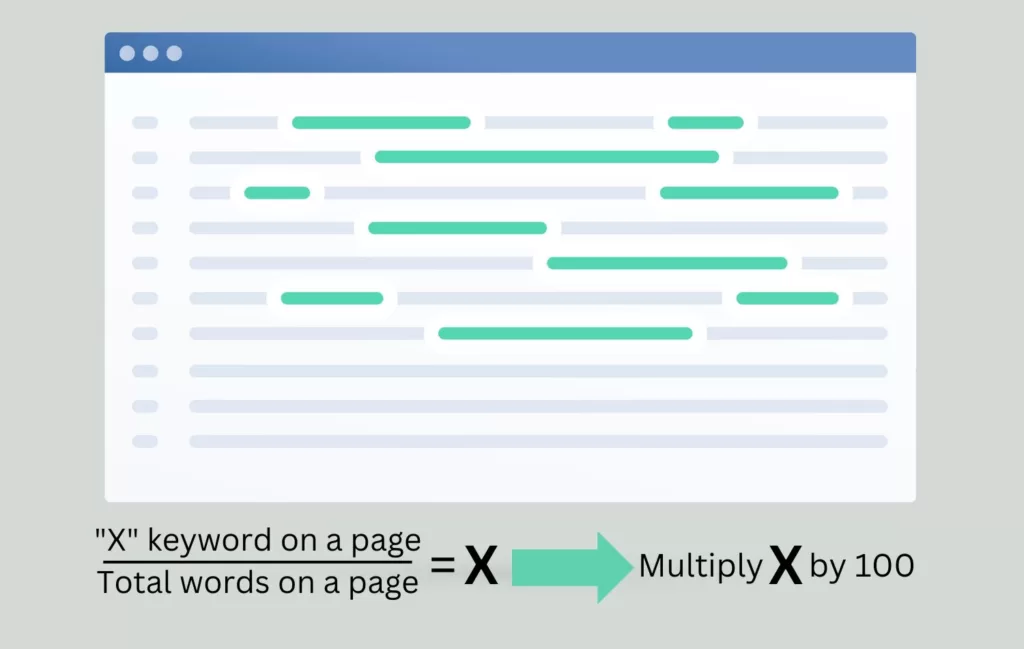What is Keyword Density?
Keyword density is the number of times a keyword may appear on a webpage or within a specific piece of content as a ratio or percentage rate of the total word count. By noticing the number of times the keywords may appear, that calculates the overall keyword frequency on a specific webpage. Normally, a user or search engine would use Keyword Density to determine what a certain webpage may discuss.
Is Keyword Density Important for Best SEO Practices?

Keywords are a significant piece to an SEO strategy’s puzzle, therefore Keyword Density matters. By launching efficient keyword practices, you’re imminently positioning yourself in the place of people who have specific Keyword intent, meaning they’re more likely to find your content if the keywords they would more than likely search are embedded in your business’s webpage.
Every day, we search certain keywords online to find specific content. To grow your search engine rankings, become an authority on the subject matter you’re representing. When you’ve found via the right keywords and Keyword Density per each piece of content, there is an increased chance of re-targeting, achieving higher conversion rates, and boosting customer loyalty—a major accomplishment and golden ticket for the everyday SEO Marketer!
Where Will You See Keyword Density Used?
Let’s play out a scenario; let’s say you’re reading an article about marketing. As you read through the article, you notice the word “social media” is used frequently, followed by secondary words such as Facebook, Instagram, and LinkedIn. Although the article’s overarching topic is related to marketing, its Keyword Density narrows its focus on social media marketing strategies. Incorporating these keywords into the article boosts its opportunity to rank higher in search engines for searched keywords, including “social media” or “social media marketing.”
Things to Consider When Evaluating Your Next Piece of Content

While there are no defined “rules or regulations” for Keyword Density, make sure to implement today’s best SEO practices to ensure you achieve optimal results.
Focus on Achieving Topic Coverage – While loading content with the same keyword repeatedly is not a feasible long-term SEO strategy, focus on fully covering the topic at hand. Include subtopics to enhance your page’s search ranking and add a new level of flare and creativity.
Incorporating keyword additions to prominent places (Title Tag, H1, URL, and Meta Description) – While it’s not ideal to “stuff” your article with keywords (known as keyword stuffing) include your main keyword in the Title, Header 1, URL, and Meta Description. That way, it is placed in prominent locations and will enable a higher search ranking for that specific keyword.
Write naturally – Readers want to see personality come out in the content they see! Don’t be a robot and write to what Google’s algorithms want to see. Let the words flow the way you want them to, and the results will follow.
Now, while there isn’t a golden number that’s considered “too high” for Keyword Density in search engine optimization, it’s advisable to revise the content if goes above 2 percent.
How to Calculate Keyword Density

The formula for calculating Keyword Density is straightforward:
Divide the number of times a keyword is used on a specific page by the total number of words on the given page. Next, multiply that number by 100.
The above formula isn’t the only way to calculate Keyword Density. There are multiple types of Keyword Density checkers that help measure (in percentage) the number of times a keyword or phrase appears in comparison to the number of words on a webpage. Optimizing your overall SEO doesn’t have to be a challenge.
By simply copying and pasting your content into a checker tool, it will calculate the level of density for you!
Keyword Density and SEO Marketing Professionals at Your Fingertips
Our team of experts love to dive into the world of SEO. Since Keyword Density is a critical component of SEO marketing, we utilize and leverage proper optimization techniques and strategies to help you appear higher in SERPs, and ideally, leaps and bounds ahead of the competition.
Reach Marketing Pro has a surplus of Google algorithm trend knowledge to initiate keyword research, content creation, content analysis, and updating content months (even years) after its integration. There are many factors that come into play when ensuring every piece of content is formulated properly for the best results.
Ready to kickstart your business’s SEO strategy? Contact us to connect with your Keyword Density partner and discuss the next steps.






